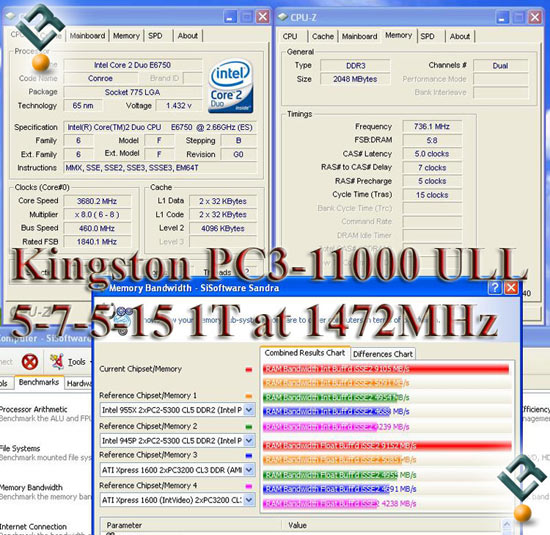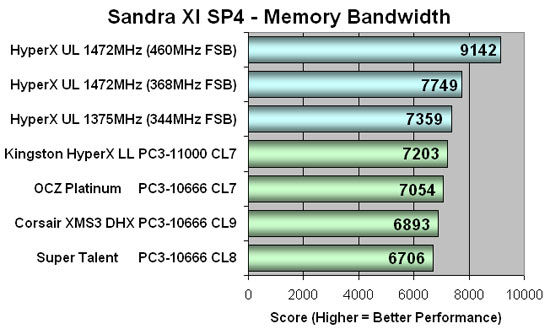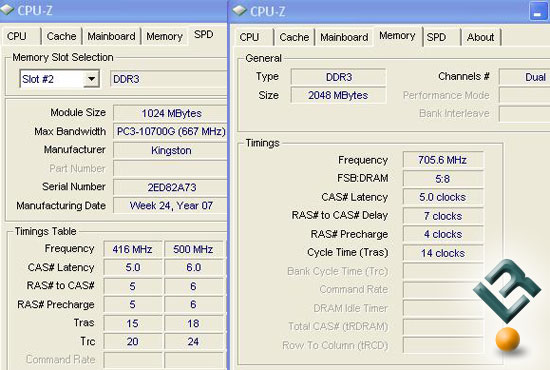2GB Kingston ultra low-latency 1375MHz CL5 DDR3 Memory Review
Overclocking
Overclocking on the ASUS P5K3 motherboard proved to be interesting. At first we couldn’t get either the Corsair or Kingston DDR3 memory modules to operate at 1600MHz, which shouldn’t be tough to do. After checking the VDIMM voltages it seems that the ASUS motherboard is running more voltage that what is being set in the BIOS. This explained why weird things starting happening when the voltage was increased to over 2.0V. From that point on we kept the voltage to 1.95V for our overclocking experiments.
To start overclocking we kept the 5-7-5-15 1T timings and cranked up the FSB to see what frequency we could reach. We were able to get the FSB all the way up to 460MHz and used a 5:8 memory divider to reach 736.1MHz or 1472MHz at the default CL5 timings, which is what we expected at Elpida ICs don’t seem to like running much over ~1500MHz.

Let’s take a look at how this overclock performs on Sandra!

Just for fun we ran the memory at 1472MHz using two different FSB and memory dividers to see the impact on memory bandwidth. With the FSB overclocked to 368MHz we were able to use a 2:3 divider to reach 1472MHz. We were then able to run FSB at 460MHz with a 5:8 divider to again reach 1472MHz. As you can tell in the above Sisoftware Sandra XI SP4 benchmark results the higher front side bus is the way to go when it comes to memory bandwidth.
Tight Timings
You can’t get much tighter than 5-7-5-15 1T with DDR3 memory as many boards like the ASUS P5K3 don’t have BIOS settings available for the CAS Latency to go below five, but the other settings can be adjusted lower.

For starters the RAS to Cas Delay is being tough to play with as it can’t be lowered below 7 at any frequency or voltage, which is a pain. The RAS Precharge was lowered from 5 to 4 with no problems and the Cycle Time (Tras) was lowered down from 15 to 14. With these tighter timings the modules were able to overclock up to 1411MHz before becoming unstable. Being able to hit 5-7-4-14 1T timings at 1411MHz was impressive, but not much tighter than what the stock settings are.

Comments are closed.